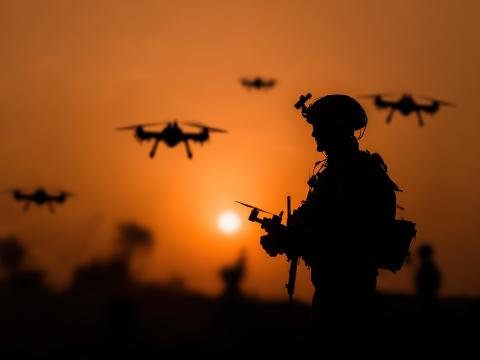Drills Drive Home Disaster Readiness and Mission Rehearsal
PACOM's effort to increase interaction between the U.S. and foreign governments through training exercises can reduce the potential for disputes or conflicts. What more can be done in the area to promote security and stability? Share your ideas here.
Bridging the waters surrounding the most remote island chain on the planet-that is the mission of the U.S. Pacific Command (PACOM). It uses training exercises with neighboring countries to improve interoperability and promote peace.
In this month's issue of SIGNAL Magazine, News Editor Rita Boland explores the command's effort to rehearse real-world emergencies and establish relationships with its allies in her article, "Practice Makes Perfect."
According to PACOM, it will sponsor 17 exercises in fiscal year 2011, organized and executed by a staff of 26 full-time planners. In addition to interacting with countries in the command's area of operations, PACOM hopes to create continuity in an environment where personnel constantly change, says Cmdr. Alan Aber, USN, Warfighting Exercises Branch chief, Headquarters PACOM. This way, when disaster strikes, neighboring nations have prior relationships and training to guide them.
Cmdr. Aber says that in addition to exercises for military-operations preparation, the command focuses on disaster response due to the abundance of natural threats in the area, including volcanoes, earthquakes and cyclones. In these exercises, the line between reality and practice often blurs, because participants provide actual aid to people in the area as part of the drills. This balance between training and real missions continues when problems crop up during an event and participants are diverted to respond.
The command's largest exercise, Talisman Saber, involves 24,000 individuals from Australia and the U.S. who focus on operational and tactical interoperability. Other nations often attend to observe even if they do not actively participate. The same holds true during Key Resolve, which is another large exercise between U.S. and Korean forces involving field and command post training.
Many programs have grown in recent years with the increased interest from multinational observers. Cobra Gold, which began between the U.S. and Thailand, now incorporates Singapore, Japan, Indonesia and the Republic of Korea.
Civilian agencies and nongovernmental organizations often play a large role in the humanitarian missions and exercises, such as Pacific Partnership, which is an activity that strengthens regional relationships with medical, dental and engineering aid. The command works to make sure these missions mirror current problems seen around the globe to challenge participants and eliminate any confusion when actual events occur, explains Cmdr. Aber:
"When you present the training audience with complex scenarios that staff has to work through, they realize where their strengths and deficiencies are."PACOM's effort to increase interaction between the U.S. and foreign governments through training exercises can reduce the potential for disputes or conflicts. What more can be done in the area to promote security and stability? Share your ideas here.




Comments